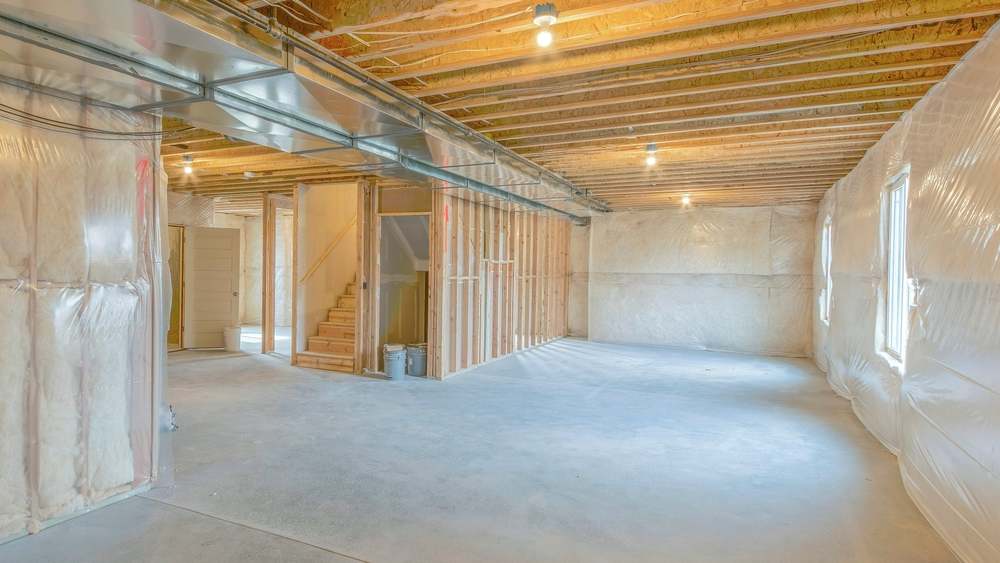When Do You Need a Vapor Barrier with Insulation?
The integration of a vapor barrier with insulation is a critical step in building construction and renovation. For engineers and contractors, understanding when to implement this layer is key to ensuring the longevity, efficiency, and compliance of a structure’s thermal envelope.
Vapor barriers are necessary when you need to prevent moisture from passing through the insulation, which can compromise the insulation’s effectiveness and potentially damage the structure. It’s essential to use vapor barriers in climates that have significant temperature differences between indoors and outdoors, which can lead to condensation issues. Let’s delve into the intricate balance between moisture control and insulation within building dynamics.
What Are Vapor Barriers?
At its core, a vapor barrier is designed to prevent moisture from permeating through walls, ceilings, and floors. These barriers are pivotal in any insulation system, preventing water vapor from condensing within the insulation layer, which could lead to mold growth, structural damage, and reduced thermal efficiency. The decision about whether you need to install a moisture barrier depends on your local building code. Always check with your building code insulation inspector.
Exterior or Interior Vapor Barrier?
Deciding where to install the vapor barrier hinges on several factors, including the insulation’s location and the local climate. For instance, in colder climates, vapor barriers are typically installed on the interior side of the insulation to prevent warm, moist air from condensing within a cold wall cavity. Conversely, in hot and humid climates, the barrier should be placed on the exterior side to prevent outdoor moisture from entering the structure.
Critical Considerations for Insulation Types and Vapor Barriers
Insulation comes in various forms, each with its specific characteristics and requirements for vapor barriers. To navigate this landscape, we must understand how each insulation type interacts with moisture and under what conditions a vapor barrier is warranted.

Faq's
Do You Need a Vapor Barrier with Foam Board Insulation?
When it comes to foam board insulation, it’s crucial to discern whether the material itself acts as an adequate vapor barrier. Some foam boards are designed with a built-in moisture barrier. However, if the foam board is permeable to vapor, an additional vapor barrier must be considered to prevent moisture from penetrating through to the warm side of the insulation.
Do You Need a Vapor Barrier With Rigid Foam Insulation?
Rigid foam insulation is often installed on the exterior of buildings, offering a layer of insulation that doubles as a moisture barrier. Yet, in specific setups, especially when used on the interior or within cavities, a vapor barrier may be necessary to stop moisture on the warm side, preserving the effectiveness of the insulation.
Do You Need a Vapor Barrier With Spray Foam Insulation?
With spray foam insulation, the equation changes. Closed-cell spray foam inherently acts as a vapor barrier due to its low permeability. Therefore, when applying closed-cell spray foam, an additional vapor barrier is typically not required. However, if open-cell spray foam is used, which is more permeable, the installation of a vapor barrier should be considered to prevent moisture ingress.
Does Blown-In Insulation Need a Vapor Barrier?
Attics are often insulated with blown materials like fiberglass or cellulose. The answer depends on the climate and the location of the vapor barrier. In colder climates, a vapor barrier closer to the interior is generally recommended to prevent warm, moist air from condensing in the cold attic.
By understanding these materials’ properties and the science of moisture control, professionals can ensure that their projects are not only efficient and compliant with current regulations but also poised for long-term resilience.
The Advantages of Smartech’s QUATTRO Insulation
In the context of vapor barriers and insulation, the benefits of choosing the right materials cannot be overstated. Smartech’s QUATTRO Insulation exemplifies the ideal combination of insulation and vapor barrier, offering a versatile, all-in-one solution for diverse construction needs.
Due it its design with multiple layers, QUATTRO insulation is an effective condensation barrier. This is how it works: The two outer aluminum layers will match the temperature of the air on the side to which they are exposed, and the dewpoint temperature is then locked inside the product between those layers. Because QUATTRO has three interior layers of closed cell dry air, it simply does not allow condensation to form.
Compliant with stringent building codes and boasting an ASTM E84 Class 1 / Class A fire resistance classification, QUATTRO Insulation is suitable for a range of climates and meets high safety standards for both residential and commercial construction.
Discover more about how QUATTRO can contribute to your construction projects by visiting Smartech’s QUATTRO Insulation.
For personalized advice or further information, don’t hesitate to reach out. Contact Smartech today and seal the deal on your project’s success with QUATTRO Insulation.
Looking for More Information?
Check out our Resources or Contact Us
